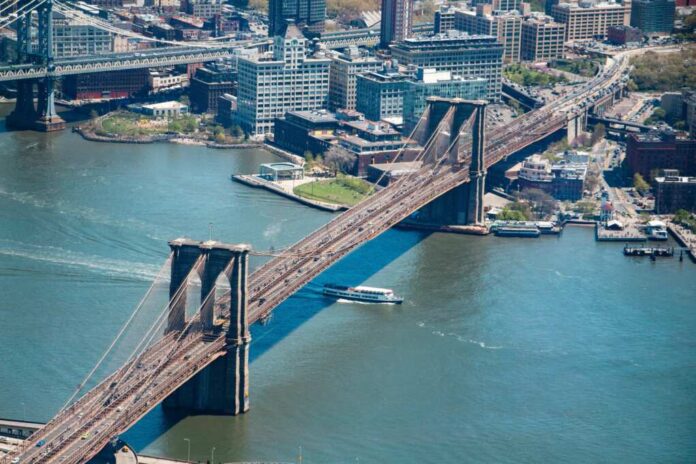
The Mexican Navy’s training ship Cuauhtémoc collided with the Brooklyn Bridge after a mechanical failure, resulting in two fatalities and halting its global tour.
At a Glance
- Mexican Navy ship Cuauhtémoc collided with the Brooklyn Bridge on May 17, 2025
- Two crew members died and at least 19 others were injured
- The vessel suffered a power and steering failure during a goodwill tour
- The Brooklyn Bridge remained structurally unharmed and was quickly reopened
- A binational investigation is underway involving U.S. and Mexican authorities
Tragedy on the East River
A peaceful Saturday night turned deadly when the Mexican Navy’s storied training vessel, the Cuauhtémoc, crashed into the Brooklyn Bridge, killing two cadets and injuring nearly two dozen more. The 295-foot barque, known for its towering 158-foot masts, was traveling up the East River as part of a goodwill world tour when it lost power and control, veering into one of New York City’s most iconic landmarks.
The crash, which occurred around 8:26 p.m. on May 17, sheared off the ship’s masts upon impact. The fallen rigging crushed crew members on deck, leading to the deaths of 21-year-old naval cadet América Yamilet Sánchez and 23-year-old sailor Adal Jair Maldonado Marcos, both of whom were reportedly manning mast positions during the accident.
Watch a report: NTSB investigating the ship that crashed into the Brooklyn Bridge.
Victims and Reactions
Emergency crews responded quickly, treating 27 people on site and transporting several to area hospitals. As of the latest update, at least two injured sailors remain in critical condition. The tragic deaths of Sánchez and Maldonado have sparked an outpouring of grief in Mexico, where the Navy has pledged “total transparency and responsibility” in the probe, according to Secretary Raymundo Pedro Morales Ángeles.
New York City Mayor Eric Adams confirmed that the Brooklyn Bridge “sustained no damage” and “is now open to the public,” calling the city fortunate that more lives weren’t lost in what could have been a much larger disaster.
Investigation and Implications
The U.S. National Transportation Safety Board, in cooperation with Mexican authorities, has launched an investigation into the mechanical failure that disabled the Cuauhtémoc. Preliminary theories suggest strong river currents and turbulent water may have exacerbated the vessel’s steering issues, which occurred just minutes before the crash.
The Cuauhtémoc, a symbol of Mexican naval pride launched in 1982, had embarked on a celebratory global voyage to honor 200 years of national independence. With stops planned in Aberdeen and New York, the tour was intended to foster international goodwill. That mission has now come to a halt, as the ship lies damaged and docked at Pier 36 awaiting inspection.
The collision highlights vulnerabilities in maritime navigation under unpredictable urban river conditions, raising urgent questions about safety standards and preparedness on ceremonial voyages. As the investigation unfolds, both nations are grappling with a somber moment that entwines diplomacy, disaster, and the resilience of historic infrastructure.




















